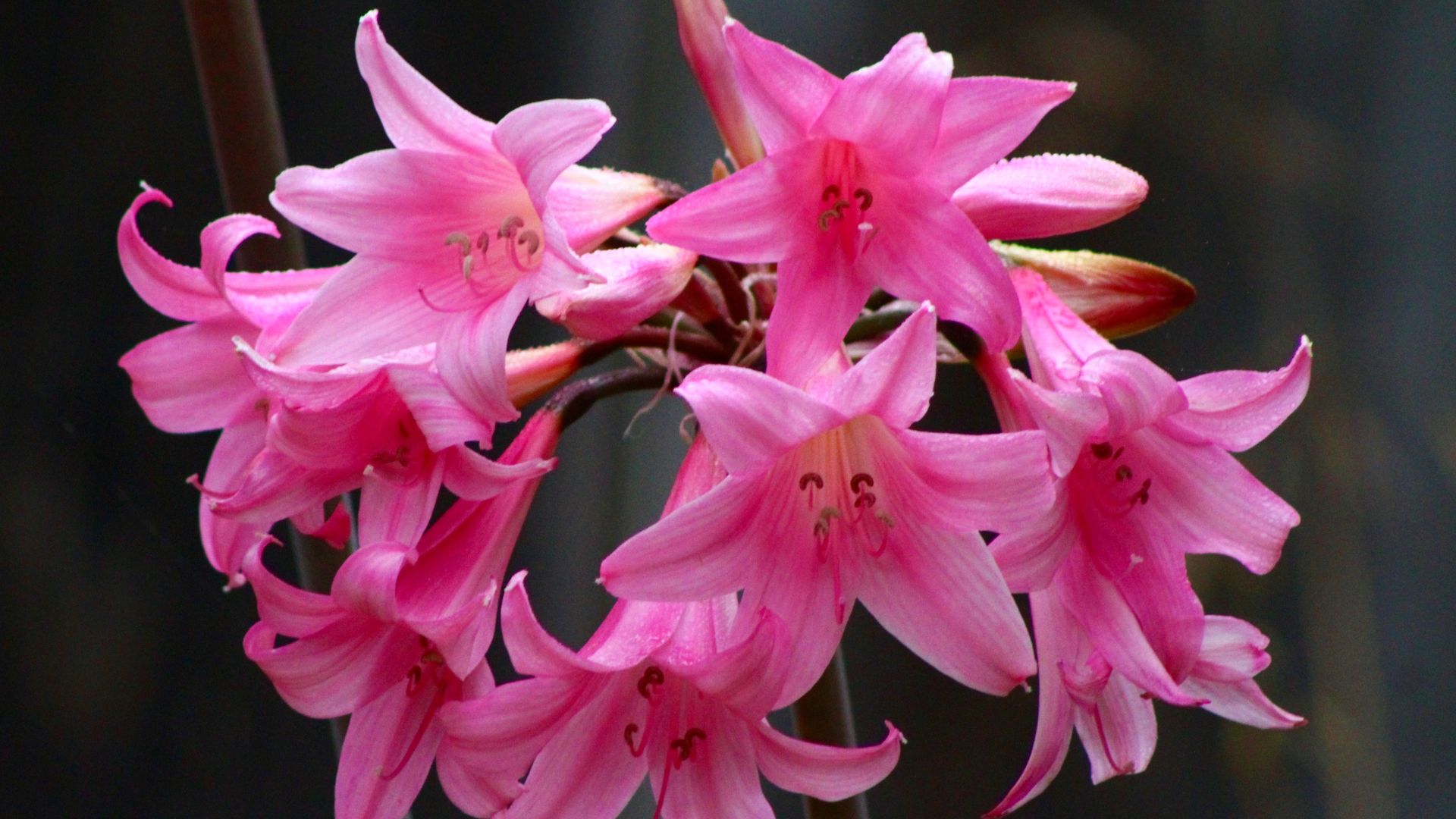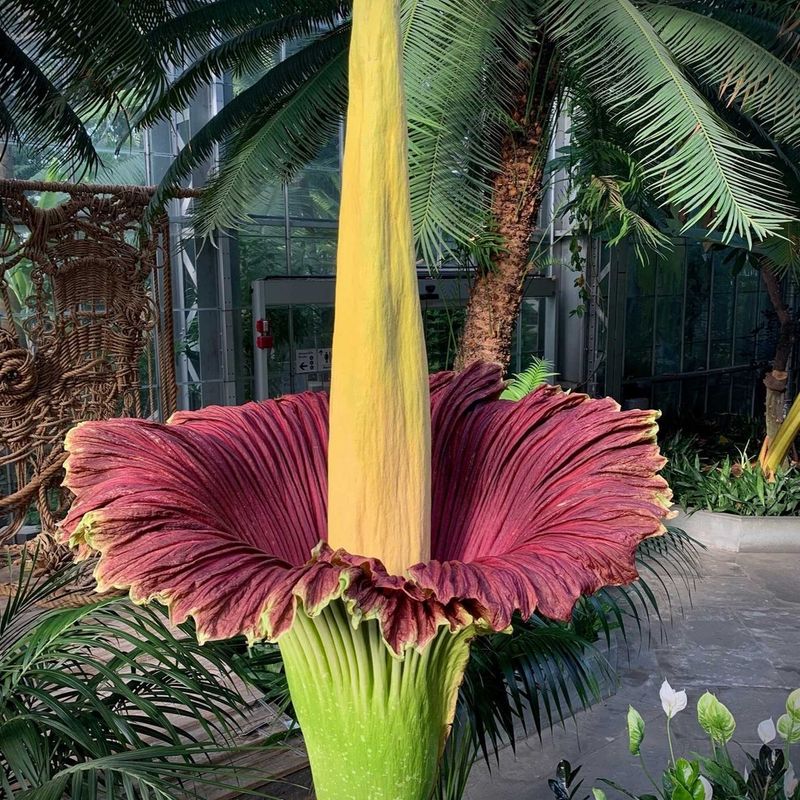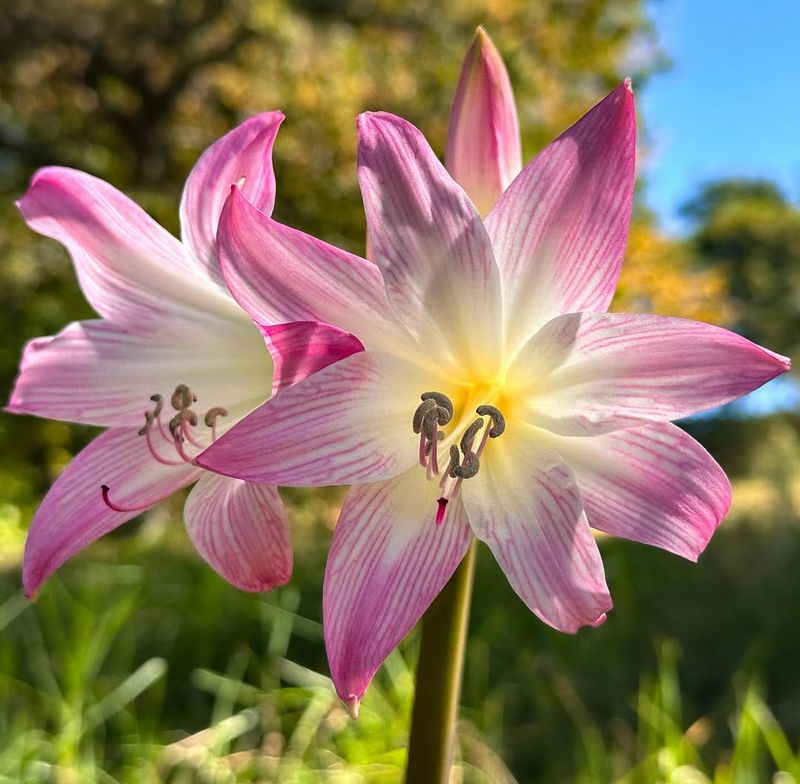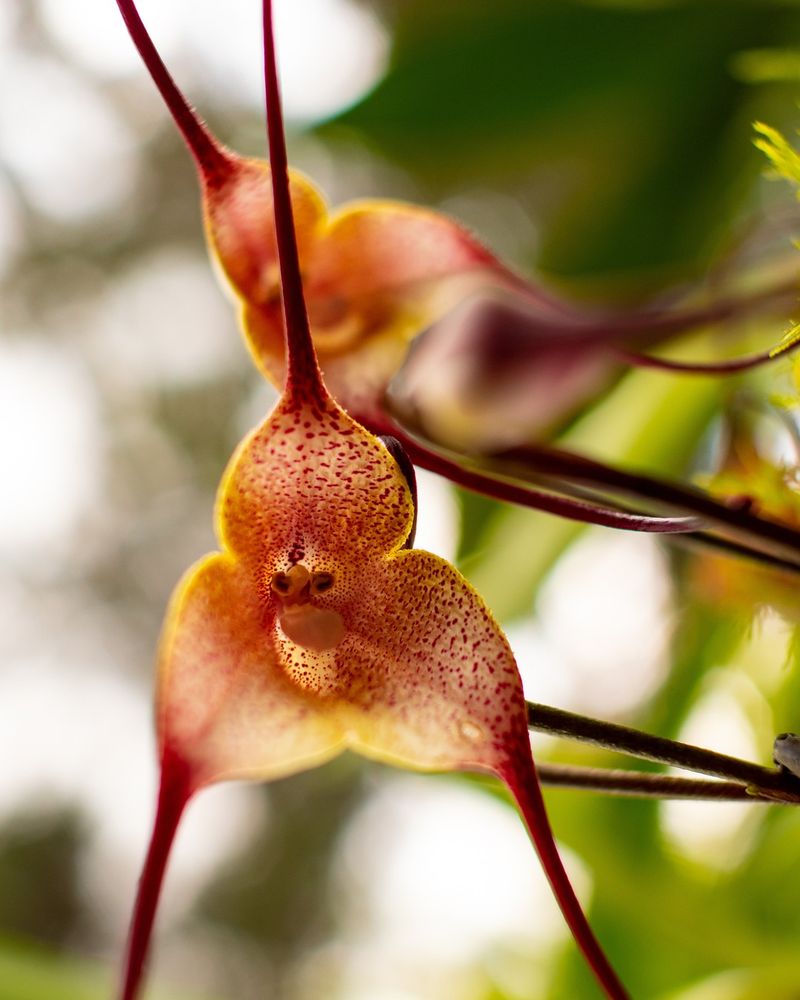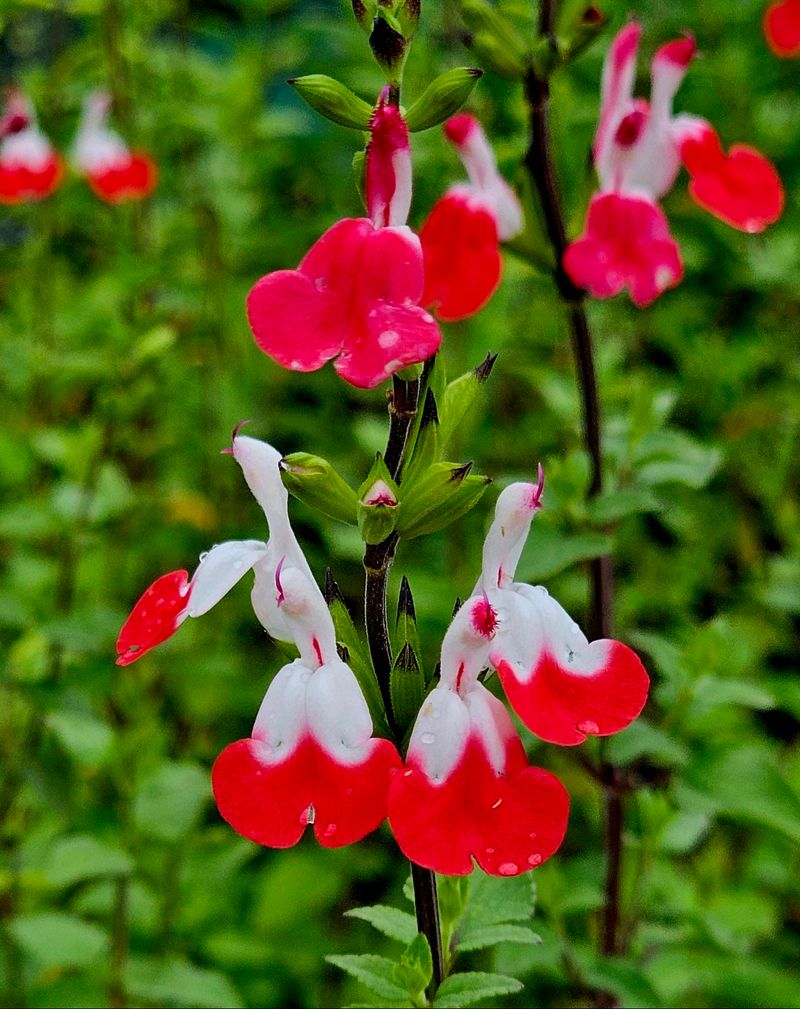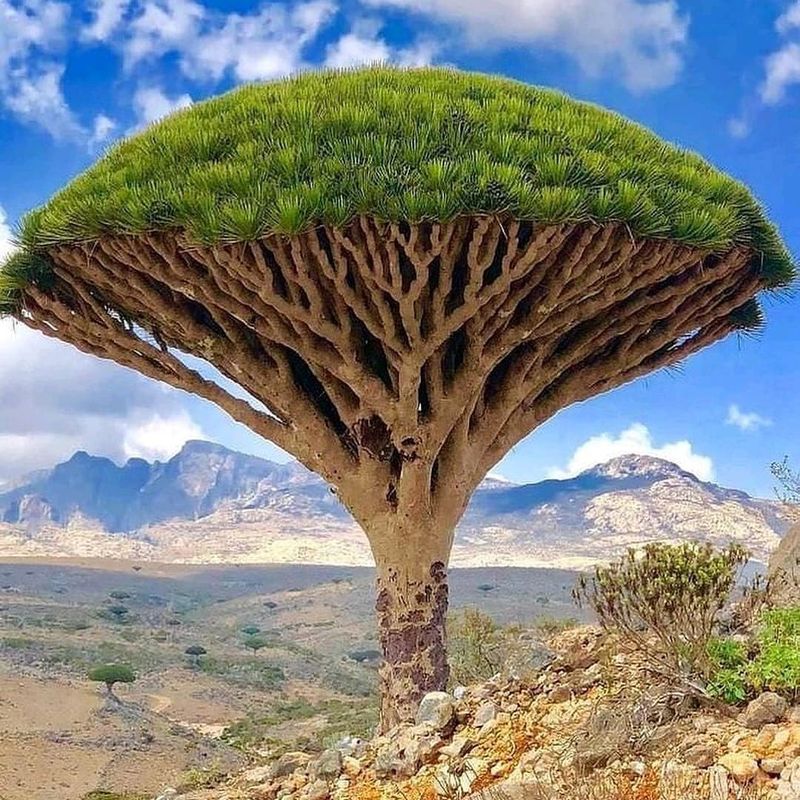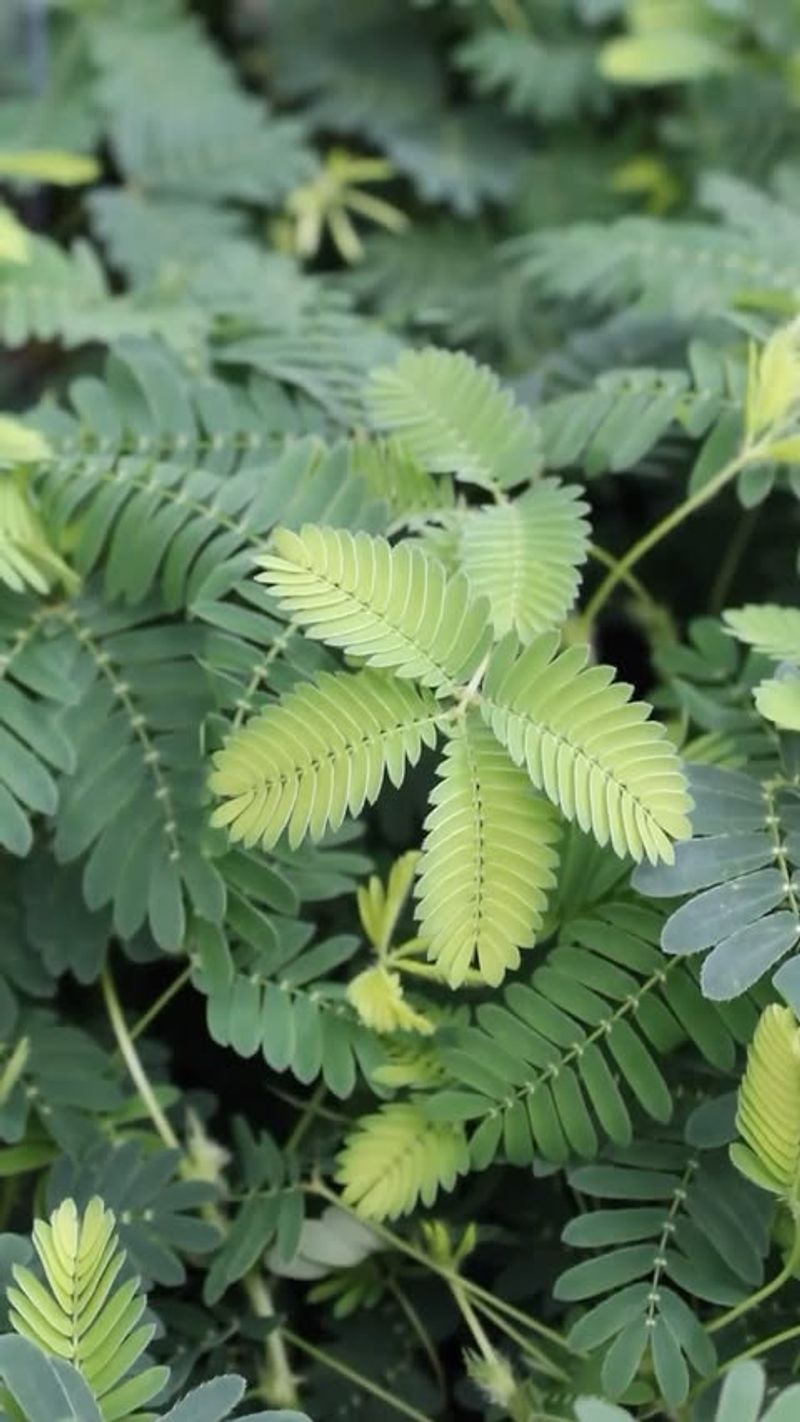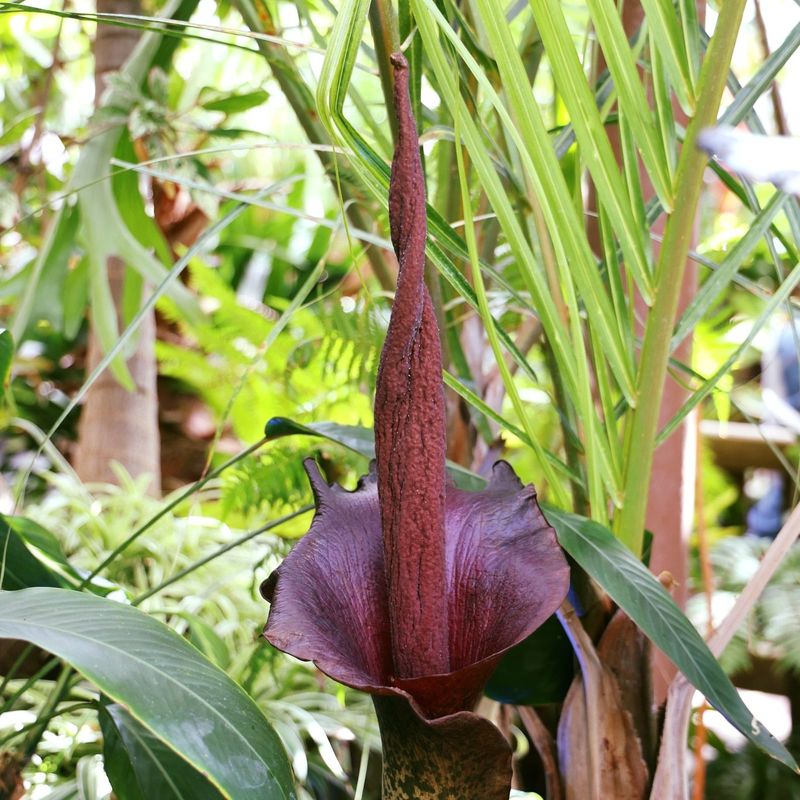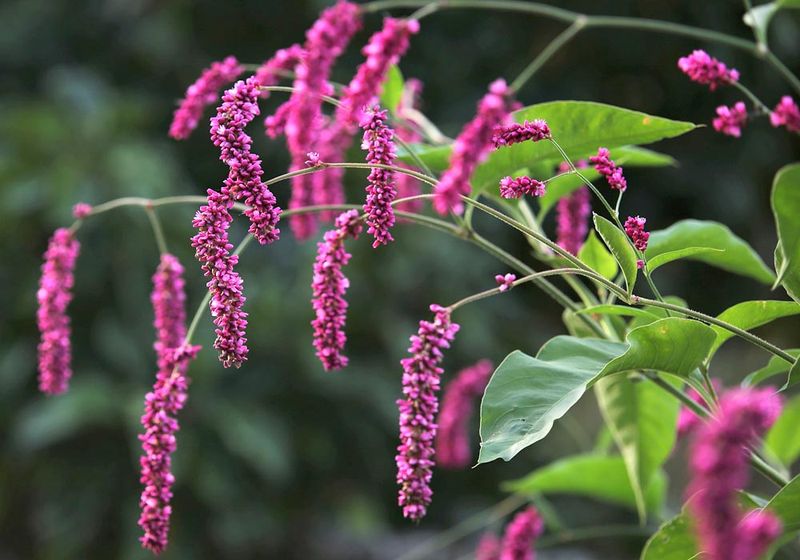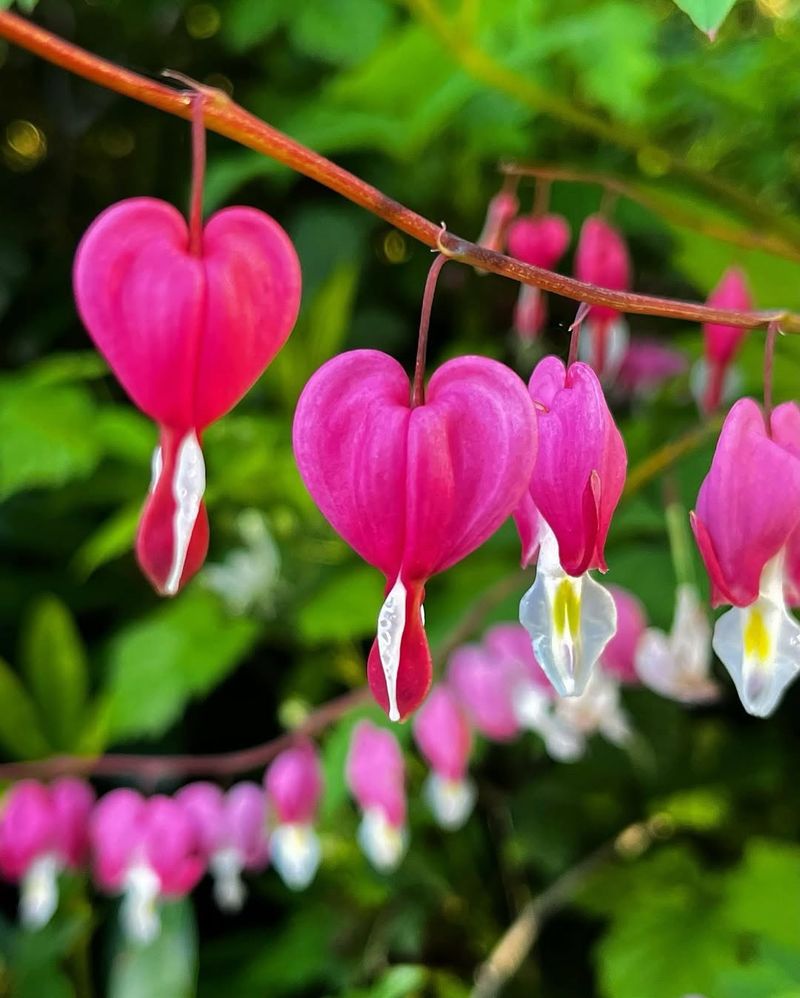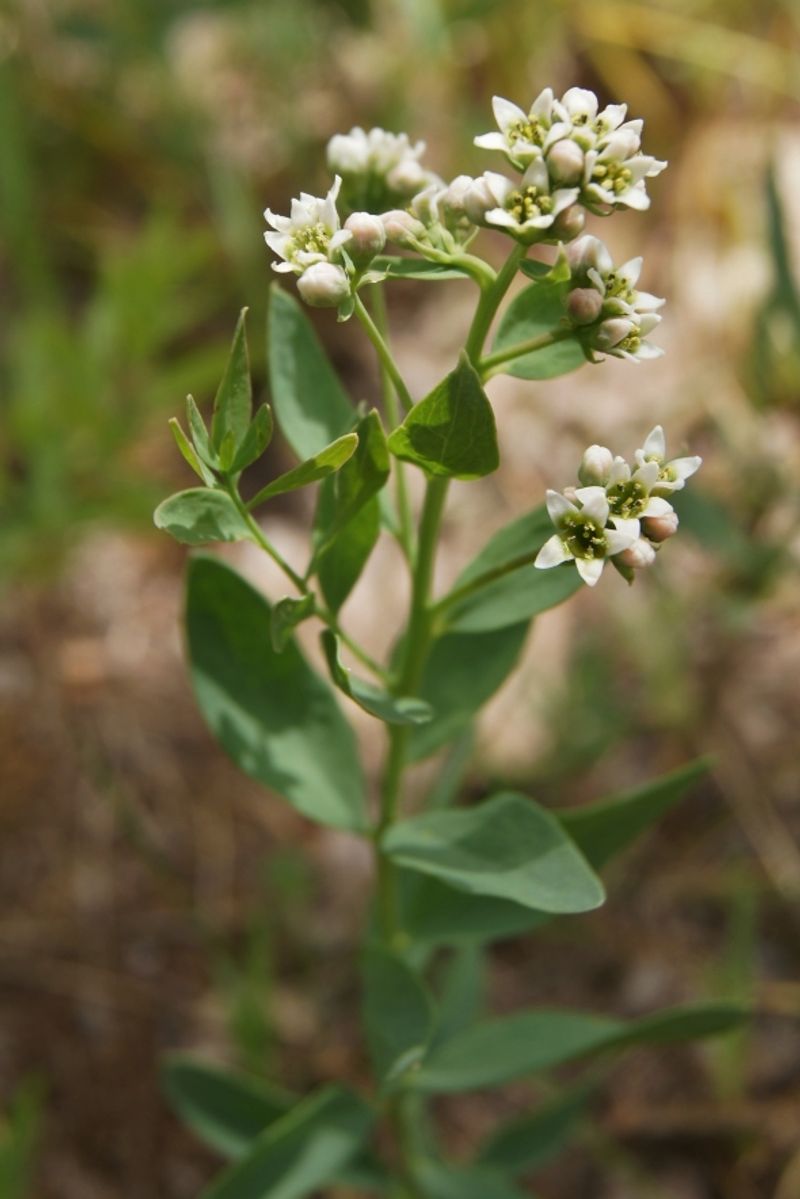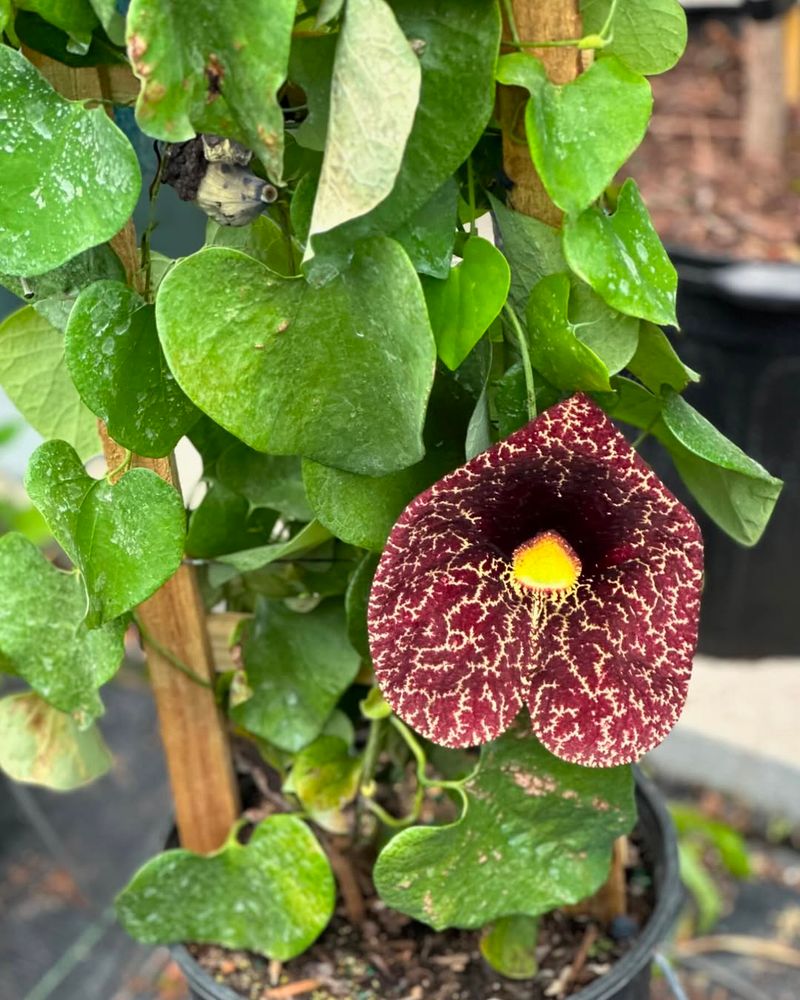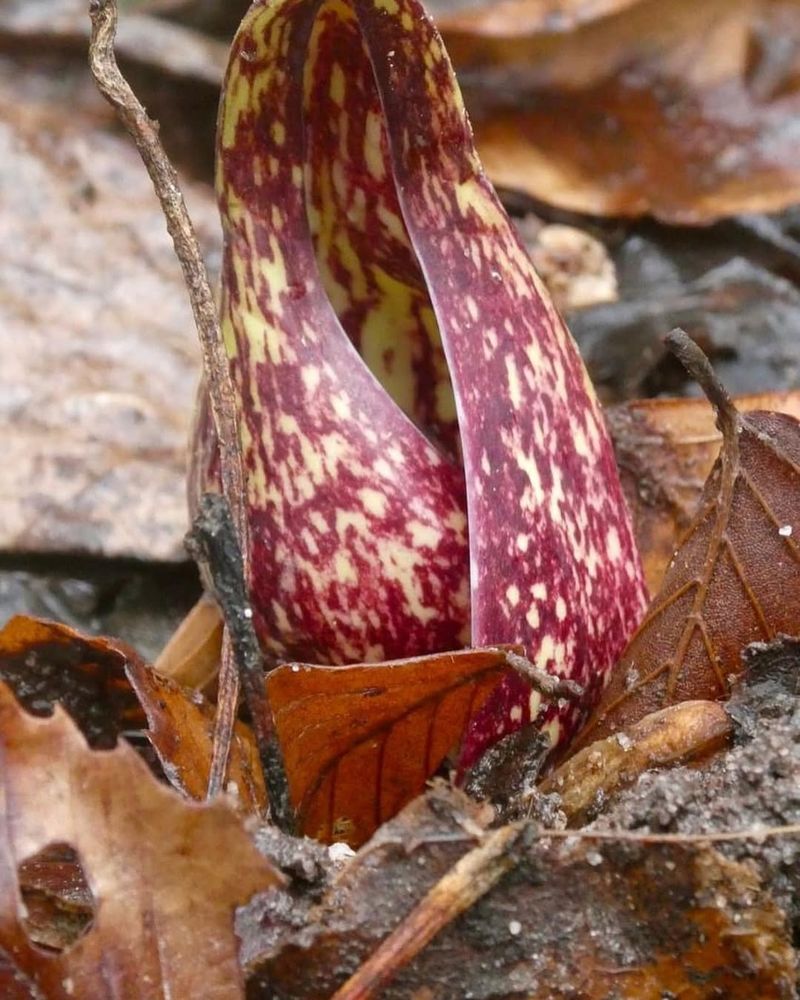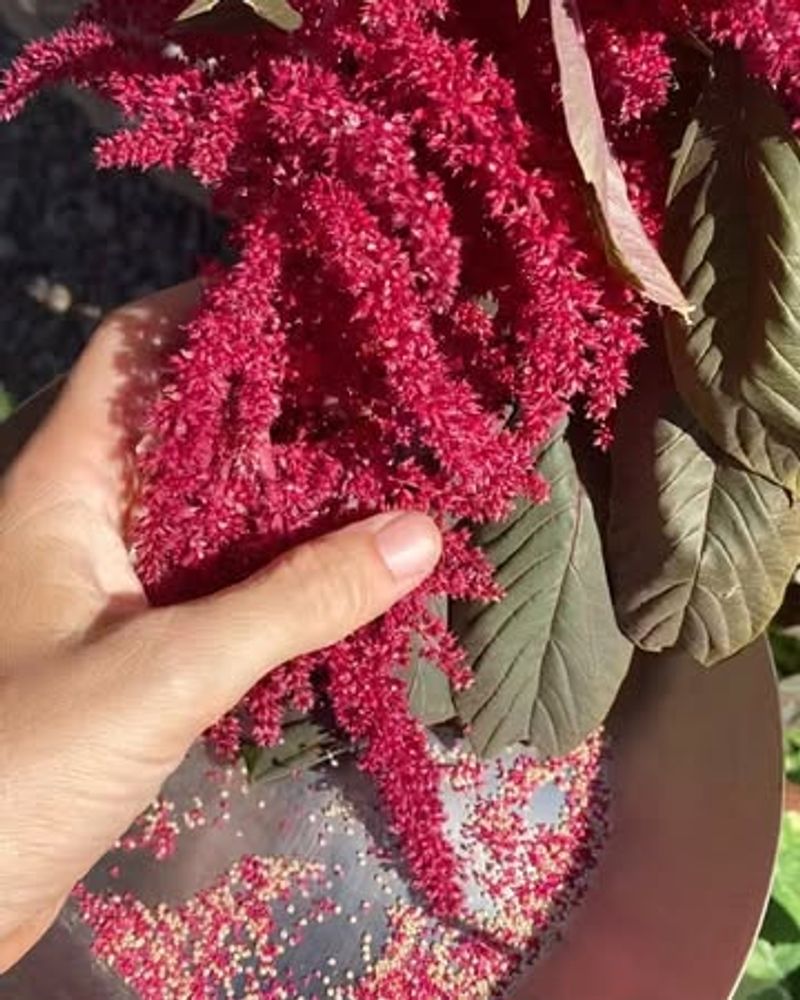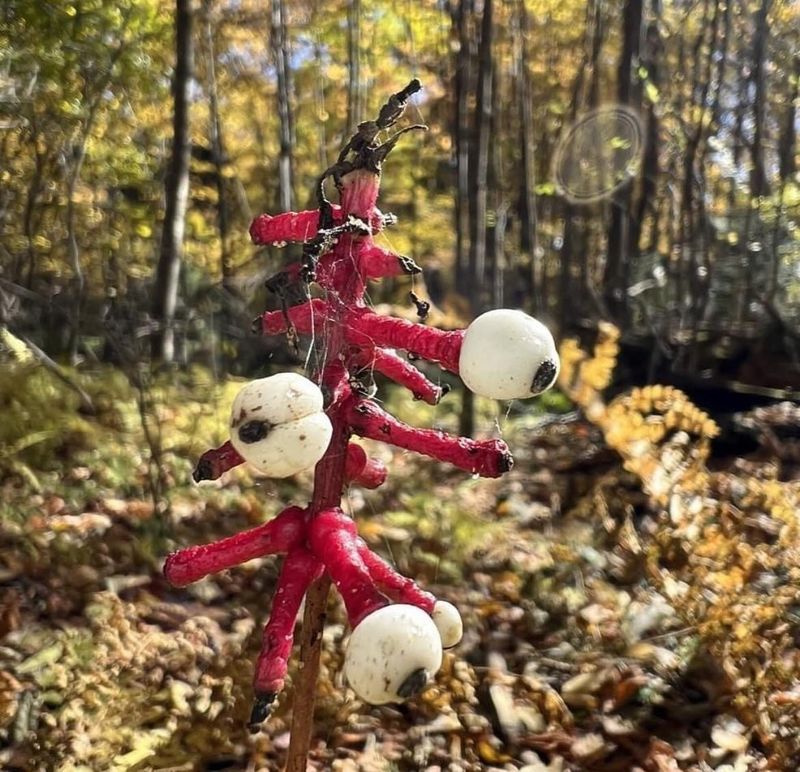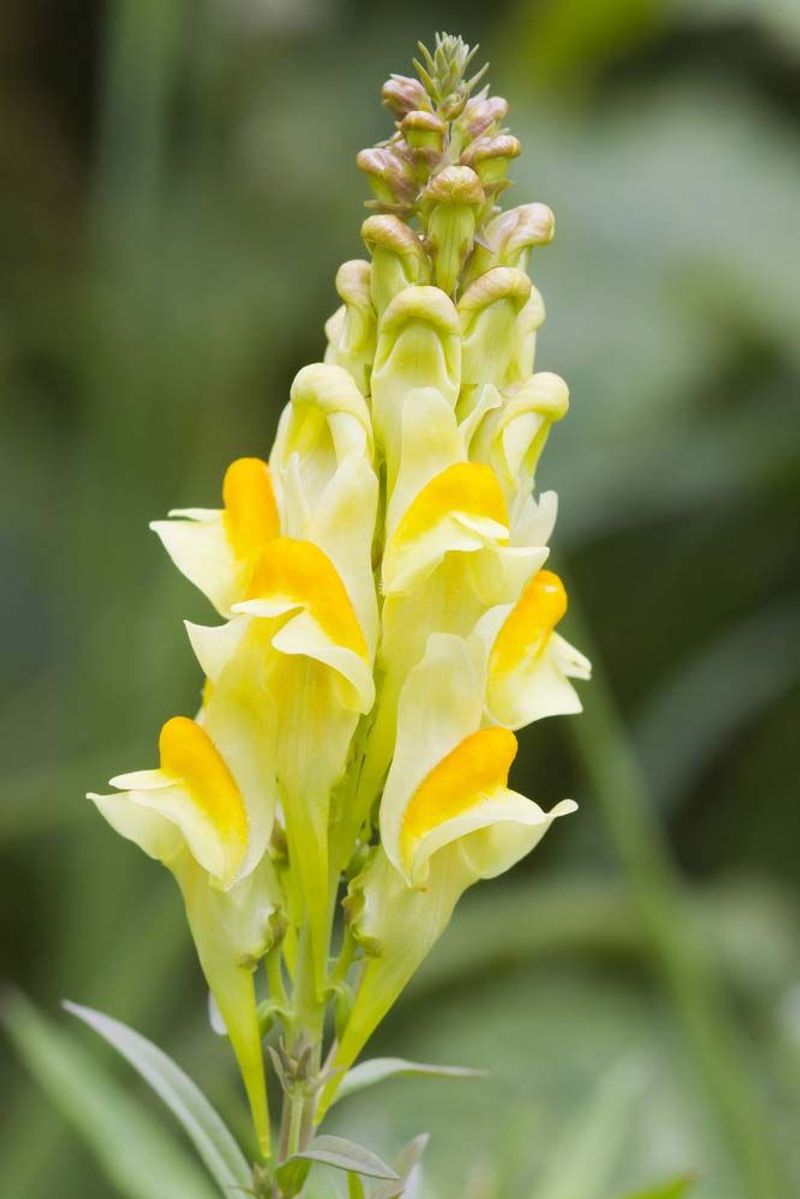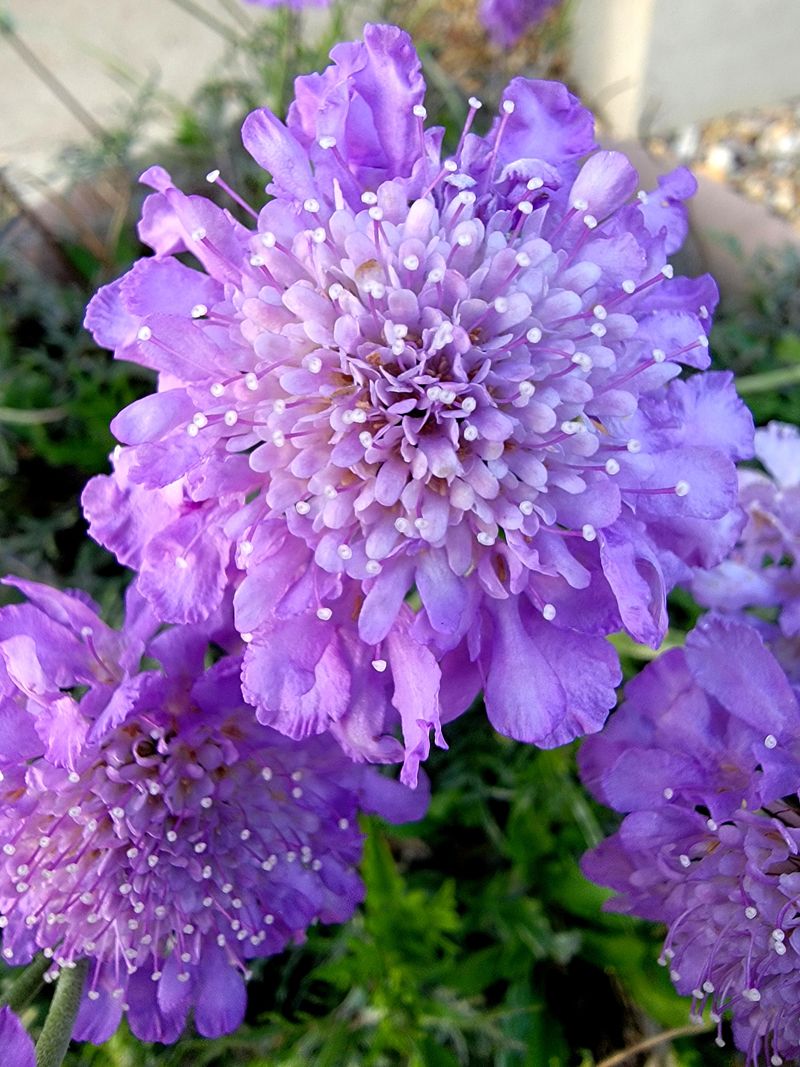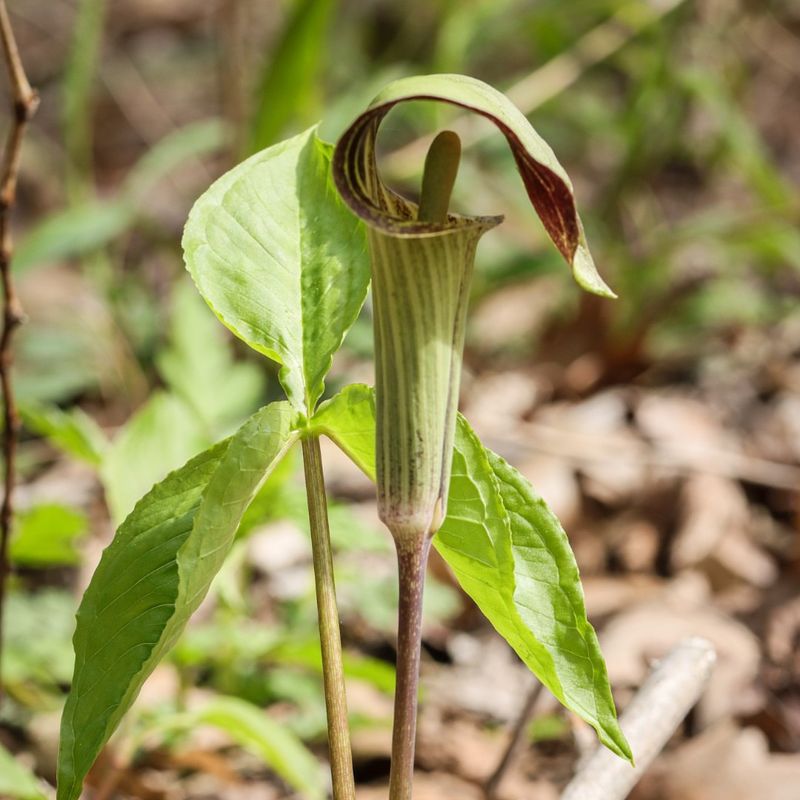Have you ever wandered through a plant nursery and found yourself giggling at a label? I definitely have. Some plant names are so odd or downright ridiculous, you can’t help but wonder who came up with them—and what they were thinking.
From blooms that sound like strange ailments to shrubs that could double as dessert items, these names tend to stick in your head even if the plant itself doesn’t make it home. I’ve had more than one garden center trip turn into a comedy show just reading tags.
Over the years, I’ve kept a running list of my favorites—some I grow just because the names make me smile every time I see them. Let me share a few that always brighten my day, whether they’re in my garden or just in my imagination.
1. Corpse Flower
You’ll never forget encountering this botanical oddity, and not just because of its appearance. The smell is what truly burns this plant into your memory – it mimics rotting flesh to attract pollinating insects that normally lay eggs in decaying animals. I nearly gagged the first time I experienced it at a botanical garden!
Native to Sumatra’s rainforests, this giant can reach up to 10 feet tall when flowering. What’s fascinating is that despite its horrific smell, people line up for hours at botanical gardens just to witness its rare blooming events.
The scientific name, Amorphophallus titanum, is almost equally memorable once translated – it essentially means ‘giant misshapen phallus.’ Botanists apparently have quite the sense of humor when naming their discoveries.
2. Naked Ladies
Walking into my grandmother’s garden in late summer always brought a delightful surprise. These pink beauties would suddenly appear without any foliage – just bare stems topped with stunning blooms, standing tall like they owned the place.
The name comes from this curious growth habit. Unlike most flowering plants, this one sends up leafless flower stalks after its foliage has died back, creating the illusion of flowers standing ‘naked’ in the garden. My neighbor once asked what I was planting, and I couldn’t help but laugh at her expression when I answered.
Sometimes called ‘resurrection lily,’ these bulbs can survive for decades with minimal care. I’ve transplanted some from my grandmother’s garden that are now over 30 years old and still putting on their cheeky late-summer show.
3. Mother-In-Law’s Tongue
The sharp, pointed leaves of this houseplant inspired its wickedly humorous name that always gets a knowing chuckle when mentioned at garden club meetings. Those stiff, upright leaves with their cutting edges certainly do bring to mind stereotypical sharp-tongued remarks!
Officially called Sansevieria trifasciata, this plant’s virtually indestructible nature adds another layer to the joke. No matter how much you neglect it, this plant stubbornly refuses to die – much like certain family relationships that persist despite occasional tension.
My own mother-in-law gifted me one years ago, completely unaware of its nickname. I’ve never had the heart to tell her, but I smile every time I water it, appreciating both the plant’s hardiness and the irony of its presence in my living room.
4. Monkey Face Orchid
The first time I saw a photo of this orchid, I honestly thought it was photoshopped. Nature couldn’t possibly create flowers that so perfectly resemble tiny monkey faces, complete with fuzzy eyebrows and little grins! Yet the Dracula simia (even the scientific name hints at its vampiric monkey face) is absolutely real.
Native to the cloud forests of Ecuador and Peru, these orchids grow at high elevations where few people encounter them in the wild. Each bloom measures just about an inch across, making their detailed monkey faces even more impressive when you consider the scale.
What’s even more delightful is that these flowers smell like ripe oranges when in bloom. Imagine walking through a misty forest and suddenly smelling citrus, only to discover tiny monkey faces grinning at you from the surrounding trees!
5. Hot Lips
Catching sight of these flowers for the first time made me laugh out loud in the middle of a nursery. Each tiny bloom really does look like a pair of glossy red lips puckered up for a kiss! The contrast between the white flower base and the bright red tips creates this uncanny resemblance.
Salvia microphylla ‘Hot Lips’ wasn’t created through genetic manipulation – it’s actually a natural mutation discovered in Mexico. During cooler seasons, the flowers might appear all red or all white, but in the heat of summer, they put on their full lipstick display.
Hummingbirds find these floral kisses irresistible, making the plant as functional as it is funny. I planted mine near my patio, and watching visitors do a double-take when they notice the plant’s name tag never gets old.
6. Dragon’s Blood Tree
Looking more like something from a science fiction movie than an actual tree, this extraordinary plant earned its memorable name from the dark red sap that oozes when its bark is cut. Ancient civilizations valued this ‘dragon’s blood’ resin for medicine, dye, and even magical rituals.
The tree’s appearance is equally otherworldly – an umbrella-shaped crown of dense, upward-pointing branches that looks nothing like typical trees. Native only to the remote island of Socotra off Yemen, these prehistoric-looking giants can live for hundreds of years in one of Earth’s most alien landscapes.
Seeing photos of these trees against Socotra’s limestone plateaus immediately put this destination on my travel bucket list. Where else can you find a tree that bleeds red and looks like it could walk away on those branch-like tentacles?
7. Sensitive Plant
The first time someone showed me this plant at a garden center, I thought they were playing a trick on me. When gently touched, the fern-like leaves instantly fold closed as if shy or startled! This dramatic reaction happens in seconds, making it impossible to forget.
Mimosa pudica uses this rapid movement as a defense mechanism against herbivores. The sudden folding makes the plant appear smaller and less appetizing to potential predators. Even more fascinating, it can actually ‘remember’ and learn – if repeatedly stimulated without actual threat, it eventually stops responding.
I bought one for my nephew, who named it ‘The Ticklish Plant’ and spent hours gently poking it to watch the reaction. Few plants offer such immediate interaction, creating an instant connection between plant and human that sparks curiosity about the natural world.
8. Voodoo Lily
Few plants command attention quite like this macabre beauty when it decides to bloom. Rising from the ground like something from a horror movie, the Voodoo Lily produces a massive, deep purple spadix surrounded by a hooded spathe that resembles decaying flesh in both color and – unfortunately – smell.
The overwhelming stench of rotting meat serves a purpose, attracting carrion flies and beetles that pollinate the flower. My gardening friend grew one in her sunroom and had to move it outside when it bloomed because the smell was so overwhelming it made her eyes water!
Also known as the Devil’s Tongue or Snake Palm, this member of the Amorphophallus family certainly lives up to its ominous names. Despite its frightful flowering habits, the plant produces beautiful, tropical-looking foliage during its growing season.
9. Kiss Me Over The Garden Gate
Romance blooms in both the flowers and the charming old-fashioned name of this Victorian favorite. Imagining couples stealing kisses beneath its arching stems instantly transports you to a more genteel era when garden trysts were the height of courtship adventure.
Polygonum orientale grows impressively tall – up to 8 feet – creating a living arbor of dangling pink flower chains that sway with the slightest breeze. Thomas Jefferson reportedly grew these beauties at Monticello, appreciating both their ornamental value and their whimsical name.
Seeds from this annual are often passed between gardening friends with stories attached. My neighbor gave me my first batch, telling me how her grandmother would plant them along garden pathways specifically to create natural meeting spots for “accidental” encounters with suitors!
10. Bleeding Heart
Hanging from arching stems like delicate Valentine’s decorations, these heart-shaped flowers capture attention with their romantic yet slightly morbid name. Each blossom perfectly resembles a heart with a tiny droplet hanging below – hence the dramatic moniker that’s impossible to forget.
The traditional pink variety (Lamprocapnos spectabilis) emerges in early spring, often before many other perennials have awakened. Folk tales surround this plant, including one about a prince who tried to win a princess’s love by presenting her with these symbolic blooms.
I remember my grandmother showing me how to gently pull apart the flowers to reveal what she called ‘the story of love’ – the outer petals form a lady in a ball gown, the inner structures resemble a man in formal attire, and what remains looks like a tiny heart. Pure garden magic!
11. Bastard Toadflax
With perhaps the most hilariously offensive name in the plant kingdom, this European wildflower certainly raises eyebrows when mentioned in polite company! The first time I saw it listed in a wildflower guide, I had to read the name twice to make sure I wasn’t seeing things.
Despite its crude moniker, Comandra umbellata is actually a delicate, unassuming plant with clusters of small white flowers. The unflattering name likely stems from its resemblance to true toadflax (Linaria) while being botanically unrelated – hence the ‘bastard’ prefix that was common in older botanical naming conventions.
What makes this plant even more interesting is that it’s partially parasitic, attaching its roots to those of neighboring plants to steal nutrients. Perhaps that sneaky behavior contributed to its less-than-flattering name!
12. Dutchman’s Pipe
You’ll do a double-take when you first spot the flowers of this unusual vine. Shaped exactly like old-fashioned tobacco pipes, complete with a curved stem and bowl, these blooms seem almost manufactured rather than grown. Nature’s sense of humor really shines through in this perfect mimicry.
Aristolochia macrophylla was popular in Victorian gardens, where it was used to create shady arbors with its large, heart-shaped leaves. The pipe-shaped flowers aren’t just whimsical – they’re also clever insect traps that temporarily imprison pollinators, covering them with pollen before release.
My garden club visited a historic home where these vines had grown for over a century, creating a living tunnel over a garden path. Walking through it felt like stepping into a storybook, with those peculiar pipe flowers dangling overhead like decorations from a Mad Hatter’s tea party.
13. Skunk Cabbage
Early spring walks in woodland areas might introduce you to this unforgettable plant in the most memorable way possible – through your nose! True to its name, disturbing the leaves releases a powerful skunk-like odor that can linger on your clothes and in your memory for days.
Symplocarpus foetidus is actually a fascinating botanical marvel, capable of generating enough heat to melt surrounding snow as it emerges in late winter. This thermogenesis can warm the plant up to 70°F above ambient temperature, creating its own micro-spring environment.
Despite its off-putting smell, this native plant plays a crucial ecological role in wetland habitats. I’ve learned to appreciate it from a distance during nature walks, pointing it out to hiking companions with the warning: “Look but don’t touch – unless you want to smell like roadkill!”
14. Love-Lies-Bleeding
Dramatic crimson tassels cascade from this plant like streams of blood, creating one of the most visually striking and aptly named plants in any garden. The first time I grew this annual, visitors would stop in their tracks, pointing at the crimson cascades with expressions of both alarm and fascination.
Amaranthus caudatus has been cultivated for thousands of years, not just for its theatrical appearance but also for its edible seeds. Ancient civilizations considered amaranth a sacred plant, using it in religious ceremonies and as a staple food crop.
The plant’s name perfectly captures the visual poetry of those drooping red flower chains. In Victorian flower language, it symbolized hopeless love or despair, making it a favorite in gothic-themed gardens where plants were chosen as much for their symbolic meaning as their beauty.
15. Eyeball Plant
Encountering this plant for the first time is genuinely unsettling – imagine dozens of realistic-looking eyeballs staring at you from a garden bed! The white flowers of Actaea pachypoda develop into glossy white berries, each marked with a distinctive dark spot that creates an uncanny resemblance to eyeballs.
Also called Doll’s Eyes, this native woodland plant seems to follow you with its gaze as you walk past. The berries persist well into fall, creating an eerie Halloween-worthy display without any decorating effort. Despite their appealing look, these ‘eyeballs’ are highly toxic – nature’s way of saying ‘look but don’t touch.’
I planted several in the shadier corners of my garden, partly for their conversation-starting appearance and partly because I enjoy watching first-time visitors do startled double-takes when they suddenly notice dozens of ‘eyes’ watching them from among the foliage.
16. Butter-And-Eggs
Brightening roadsides and meadows with their cheerful yellow-and-orange blooms, these wildflowers earned their breakfast-inspired name from their two-toned appearance. The bright yellow petals with orange centers genuinely resemble sunny-side-up eggs nestled in a pat of butter!
Linaria vulgaris has a less appetizing alternate name – Common Toadflax – but the food-themed moniker is what sticks in most people’s minds. Originally brought to America by European settlers who valued it for medicinal purposes, it’s now naturalized across North America.
During a countryside picnic last summer, I pointed these flowers out to my young niece, who immediately wanted to pick them for her pretend kitchen. Their name made perfect sense to her, and she spent the afternoon ‘cooking’ with them, cementing both the plant and the memory in our family’s summer traditions.
17. Pincushion Flower
Perfectly mimicking the sewing accessory it’s named after, this charming plant produces rounded flower heads studded with tiny stamens that look exactly like pins stuck in a cushion. The resemblance is so spot-on that it’s impossible to forget once you’ve made the connection.
Scabiosa varieties come in lavender, blue, pink, and white, each maintaining that distinctive pincushion form. Butterflies and bees absolutely adore these flowers, hovering around them like seamstresses considering their next stitch. The spent blooms are almost as decorative as the flowers, forming intricate seedheads that add textural interest.
My grandmother, an avid quilter, maintained a border of these flowers outside her sewing room window. She claimed they inspired her best work, those delicate blooms nodding in the breeze while she created her own fabric masterpieces inside.
18. Jack-In-The-Pulpit
Stumbling upon this woodland native feels like discovering a tiny fantasy world hidden among the forest floor. The unusual flower structure perfectly resembles a miniature preacher (Jack) standing under a striped canopy (the pulpit), delivering silent sermons to passing insects and admiring hikers.
Arisaema triphyllum changes appearance throughout the seasons, eventually producing clusters of bright red berries that stand out vividly against autumn’s brown forest floor. Indigenous peoples used parts of the plant medicinally, but handled it carefully – all parts contain calcium oxalate crystals that cause intense irritation.
Finding these plants during spring woodland walks always feels like a special gift from nature. I remember my father teaching me to recognize them during childhood hikes, creating a treasure hunt that turned ordinary walks into magical adventures searching for the forest’s hidden minister.

